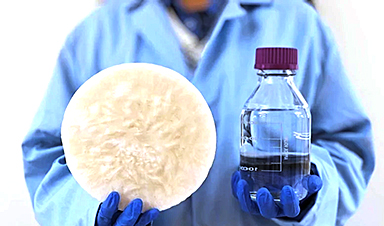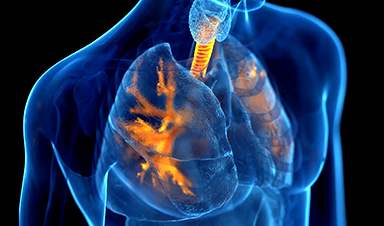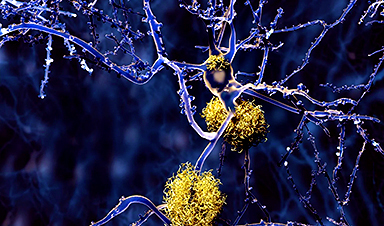The new platform helped UC San Diego scientists synthesize 32 potential multi-target cancer drugs.
Scientists at UC San Diego have developed a machine learning algorithm to simulate the time-consuming chemistry involved in the earliest phases of drug discovery, which could significantly streamline the process and open doors for never-before-seen treatments. Identifying candidate drugs for further optimization typically involves thousands of individual experiments, but the new artificial intelligence (AI) platform could potentially give the same results in a fraction of the time.
The researchers used the new tool, described today (May 6) in Nature Communications, to synthesize 32 new drug candidates for cancer.
The Shift Toward AI in Pharmaceuticals
The technology is part of a new but growing trend in pharmaceutical science of using AI to improve drug discovery and development.
“A few years ago, AI was a dirty word in the pharmaceutical industry, but now the trend is definitely the opposite, with biotech startups finding it difficult to raise funds without addressing AI in their business plan,” said senior author Trey Ideker, professor in the Department of Medicine at UC San Diego School of Medicine and adjunct professor of bioengineering and computer science at the UC San Diego Jacobs School of Engineering. “AI-guided drug discovery has become a very active area in industry, but unlike the methods being developed in companies, we’re making our technology open source and accessible to anybody who wants to use it.”
Advantages of Multi-Target Drug Discovery
The new platform, called POLYGON, is unique among AI tools for drug discovery in that it can identify molecules with multiple targets, while existing drug discovery protocols currently prioritize single target therapies. Multi-target drugs are of major interest to doctors and scientists because of their potential to deliver the same benefits as combination therapy, in which several different drugs are used together to treat cancer, but with fewer side effects.
“It takes many years and millions of dollars to find and develop a new drug, especially if we’re talking about one with multiple targets.” said Ideker. “The rare few multi-target drugs we do have were discovered largely by chance, but this new technology could help take chance out of the equation and kickstart a new generation of precision medicine.”
How POLYGON Works
The researchers trained POLYGON on a database of over a million known bioactive molecules containing detailed information about their chemical properties and known interactions with protein targets. By learning from patterns found in the database, POLYGON is able to generate original chemical formulas for new candidate drugs that are likely to have certain properties, such as the ability to inhibit specific proteins.
“Just like AI is now very good at generating original drawings and pictures, such as creating pictures of human faces based off desired properties like age or sex, POLYGON is able to generate original molecular compounds based off of desired chemical properties,” said Ideker. “In this case, instead of telling the AI how old we want our face to look, we’re telling it how we want our future drug to interact with disease proteins.”
Study co-author Katherine Licon, photographed here at the bench, is lab manager for the Ideker Lab at UC San Diego, which combines computational and traditional wet-lab techniques to answer fundamental questions about disease biology and discover new ways to enhance precision medicine. Credit: Erik Jepsen/UC San Diego
Testing and Results
To put POLYGON to the test, the researchers used it to generate hundreds of candidate drugs that target various pairs of cancer-related proteins. Of these, the researchers synthesized 32 molecules that had the strongest predicted interactions with the MEK1 and mTOR proteins, a pair of cellular signaling proteins that are a promising target for cancer combination therapy. These two proteins are what scientists call synthetically lethal, which means that inhibiting both together is enough to kill cancer cells even if inhibiting one alone is not.
The researchers found that the drugs they synthesized had significant activity against MEK1 and mTOR, but had few off-target reactions with other proteins. This suggests that one or more of the drugs identified by POLYGON could be able to target both proteins as a cancer treatment, providing a list of choices for fine-tuning by human chemists.
“Once you have the candidate drugs, you still need to do all the other chemistry it takes to refine those options into a single, effective treatment,” said Ideker. “We can’t and shouldn’t try to eliminate human expertise from the drug discovery pipeline, but what we can do is shorten a few steps of the process.”
Future of AI in Drug Discovery
Despite this caution, the researchers are optimistic that the possibilities of AI for drug discovery are only just being explored.
“Seeing how this concept plays out over the next decade, both in academia and in the private sector, is going to be very exciting,” said Ideker. “The possibilities are virtually endless.”
Reference: 6 May 2024,
Co-authors of the study include: Brenton Munson, Michael Chen, Audrey Bogosian, Jason Kreisberg, Katherine Licon, Abagyan Ruben and Brent Kuenzi, all at UC San Diego.
This study was funded, in part, by the National Institutes of Health (Grants CA274502, GM103504, ES014811, CA243885, CA212456).
News
Tumor “Stickiness” – Scientists Develop Potential New Way To Predict Cancer’s Spread
UC San Diego researchers have developed a device that predicts breast cancer aggressiveness by measuring tumor cell adhesion. Weakly adherent cells indicate a higher risk of metastasis, especially in early-stage DCIS. This innovation could [...]
Scientists Just Watched Atoms Move for the First Time Using AI
Scientists have developed a groundbreaking AI-driven technique that reveals the hidden movements of nanoparticles, essential in materials science, pharmaceuticals, and electronics. By integrating artificial intelligence with electron microscopy, researchers can now visualize atomic-level changes that were [...]
Scientists Sound Alarm: “Safe” Antibiotic Has Led to an Almost Untreatable Superbug
A recent study reveals that an antibiotic used for liver disease patients may increase their risk of contracting a dangerous superbug. An international team of researchers has discovered that rifaximin, a commonly prescribed antibiotic [...]
Scientists Discover Natural Compound That Stops Cancer Progression
A discovery led by OHSU was made possible by years of study conducted by University of Portland undergraduates. Scientists have discovered a natural compound that can halt a key process involved in the progression [...]
Scientists Just Discovered an RNA That Repairs DNA Damage – And It’s a Game-Changer
Our DNA is constantly under threat — from cell division errors to external factors like sunlight and smoking. Fortunately, cells have intricate repair mechanisms to counteract this damage. Scientists have uncovered a surprising role played by [...]
What Scientists Just Discovered About COVID-19’s Hidden Death Toll
COVID-19 didn’t just claim lives directly—it reshaped mortality patterns worldwide. A major international study found that life expectancy plummeted across most of the 24 analyzed countries, with additional deaths from cardiovascular disease, substance abuse, and mental [...]
Self-Propelled Nanoparticles Improve Immunotherapy for Non-Invasive Bladder Cancer
A study led by Pohang University of Science and Technology (POSTECH) and the Institute for Bioengineering of Catalonia (IBEC) in South Korea details the creation of urea-powered nanomotors that enhance immunotherapy for bladder cancer. The nanomotors [...]
Scientists Develop New System That Produces Drinking Water From Thin Air
UT Austin researchers have developed a biodegradable, biomass-based hydrogel that efficiently extracts drinkable water from the air, offering a scalable, sustainable solution for water access in off-grid communities, emergency relief, and agriculture. Discarded food [...]
AI Unveils Hidden Nanoparticles – A Breakthrough in Early Disease Detection
Deep Nanometry (DNM) is an innovative technique combining high-speed optical detection with AI-driven noise reduction, allowing researchers to find rare nanoparticles like extracellular vesicles (EVs). Since EVs play a role in disease detection, DNM [...]
Inhalable nanoparticles could help treat chronic lung disease
Nanoparticles designed to release antibiotics deep inside the lungs reduced inflammation and improved lung function in mice with symptoms of chronic obstructive pulmonary disease By Grace Wade Delivering medication to the lungs with inhalable nanoparticles [...]
New MRI Study Uncovers Hidden Lung Abnormalities in Children With Long COVID
Long COVID is more than just lingering symptoms—it may have a hidden biological basis that standard medical tests fail to detect. A groundbreaking study using advanced MRI technology has uncovered significant lung abnormalities in [...]
AI Struggles with Abstract Thought: Study Reveals GPT-4’s Limits
While GPT-4 performs well in structured reasoning tasks, a new study shows that its ability to adapt to variations is weak—suggesting AI still lacks true abstract understanding and flexibility in decision-making. Artificial Intelligence (AI), [...]
Turning Off Nerve Signals: Scientists Develop Promising New Pancreatic Cancer Treatment
Pancreatic cancer reprograms nerve cells to fuel its growth, but blocking these connections can shrink tumors and boost treatment effectiveness. Pancreatic cancer is closely linked to the nervous system, according to researchers from the [...]
New human antibody shows promise for Ebola virus treatment
New research led by scientists at La Jolla Institute for Immunology (LJI) reveals the workings of a human antibody called mAb 3A6, which may prove to be an important component for Ebola virus therapeutics. [...]
Early Alzheimer’s Detection Test – Years Before Symptoms Appear
A new biomarker test can detect early-stage tau protein clumping up to a decade before it appears on brain scans, improving early Alzheimer’s diagnosis. Unlike amyloid-beta, tau neurofibrillary tangles are directly linked to cognitive decline. Years [...]
New mpox variant can spread rapidly across borders
International researchers, including from DTU National Food Institute, warn that the ongoing mpox outbreak in the Democratic Republic of the Congo (DRC) has the potential to spread across borders more rapidly. The mpox virus [...]






















